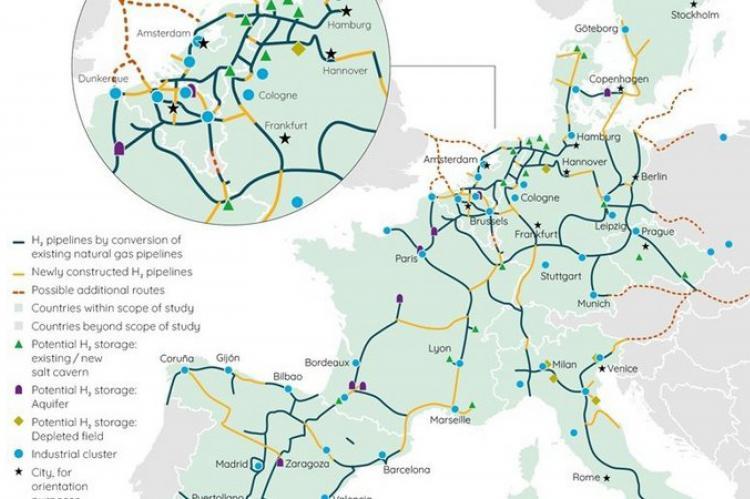Eleven Gas Giants to Move on Bringing Hydrogen to Europe

Last month a group of eleven European gas infrastructure companies from nine EU member states presented a plan for transporting hydrogen throughout Europe. The group says that existing gas infrastructure within the continent can be modified to ship the hydrogen at an affordable cost.
Major European gas companies are supporting the transition to hydrogen: Enagás, Energinet, Fluxys Belgium, Gasunie, GRTgaz, NET4GAS, OGE, ONTRAS, Snam, Swedegas and Teréga, supported by Guidehouse.
By the mid 2020s onwards these companies envision a network of gas pipelines building up to an initial 6,800 km pipeline network by 2030, connecting ‘hydrogen valleys’. By 2040, a hydrogen network of 23,000 km is foreseen, 75% of which will consist of converted natural gas pipelines, connected by new pipeline stretches (25%).
Ultimately, two parallel gas transport networks will emerge: a dedicated hydrogen and a dedicated (bio)methane network. The hydrogen network can be used for large-scale hydrogen transport over longer distances in an energy efficient way, also taking into consideration hydrogen imports.
The cost of developing this network has been estimated between €27 to €64 billion. While this may seem high at first glance, industry experts view the numbers as relatively small in the overall context of the European energy transition. The levelised cost is estimated to be between €0.09-0.17 per kg of hydrogen per 1000 km, allowing hydrogen to be transported cost-efficiently over long distances across Europe.
The gas companies' announcement comes after the European Commission published its Hydrogen Strategy which highlights the need to create a dedicated hydrogen pipeline network.
Daniel Muthmann of OGE said “we are glad to see the European Commission’s ambitious strategy to scale up hydrogen, already starting in this decade, and we think our initiative can play an important role in facilitating this. A European Hydrogen Backbone provides the opportunity to make large potential EU hydrogen supplies available to various demand sectors emerging during the energy transition. It is essential for a future EU hydrogen market. We recognise that the hydrogen backbone must become a truly European undertaking with strong links going towards eastern Member States.”

